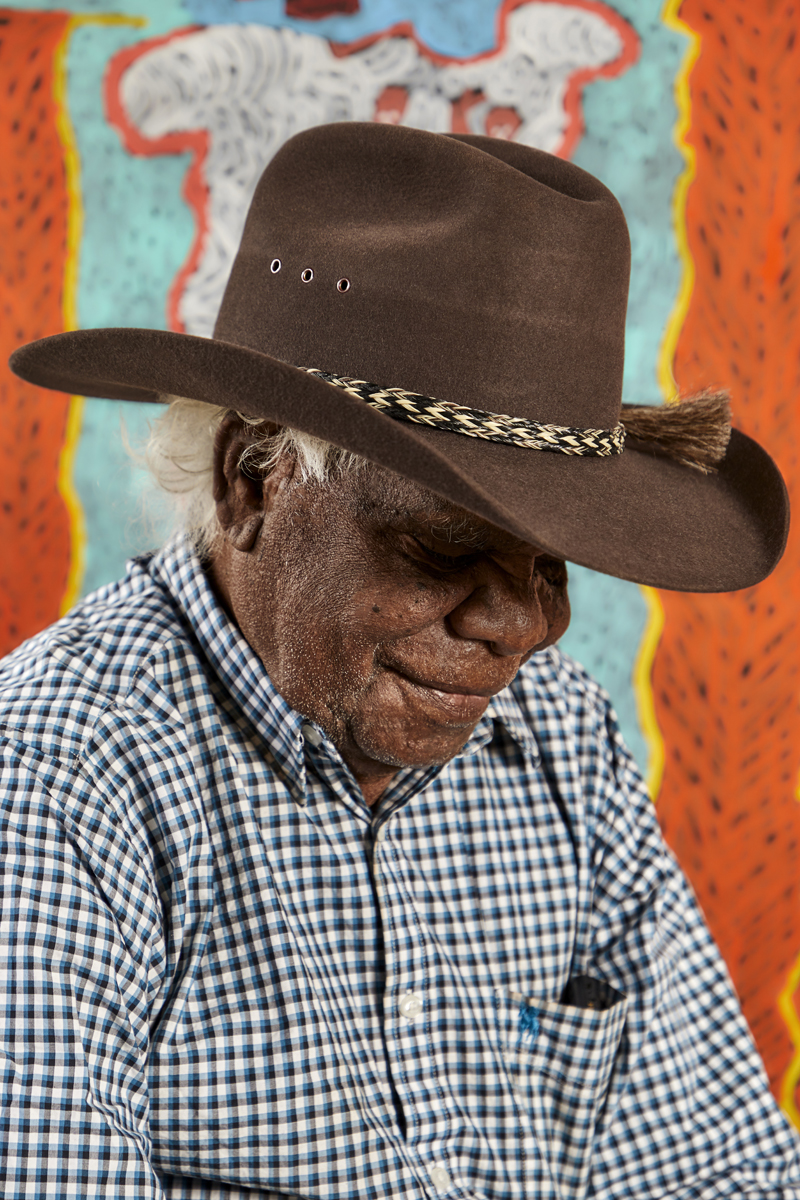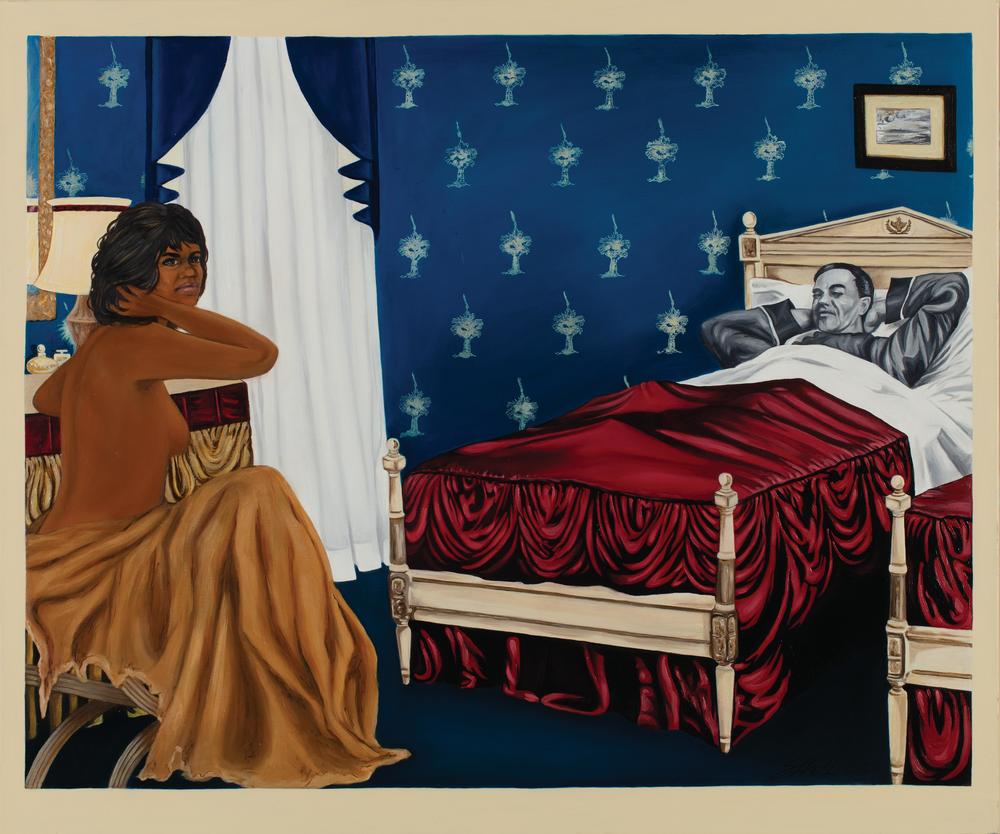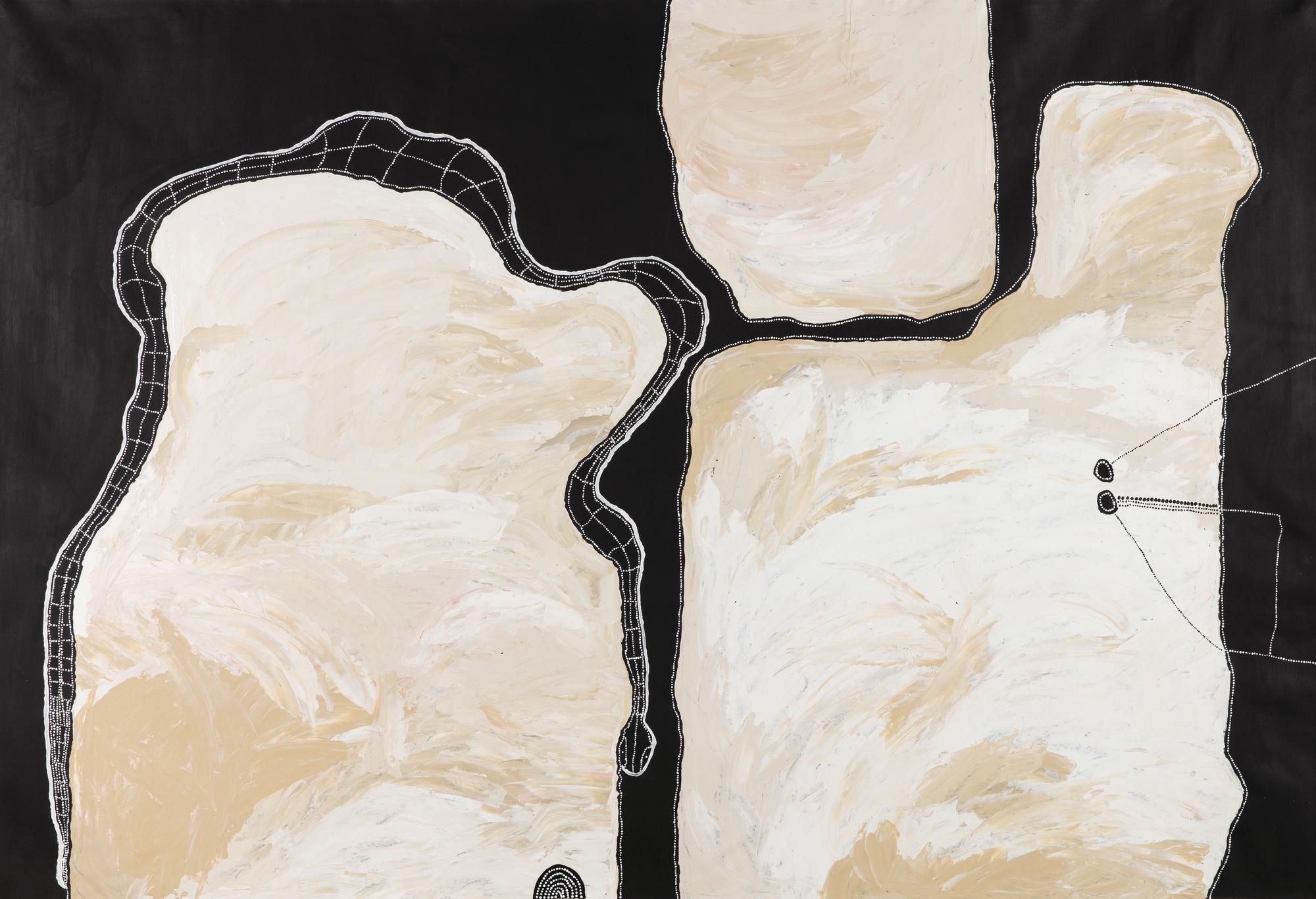Yeahnahnesia: The imaginary world of artists Yok and Sheryo
Their roots in graffiti and street art having spawned global careers, power duo Yok and Sheryo now make work about an imaginary world all of their own.
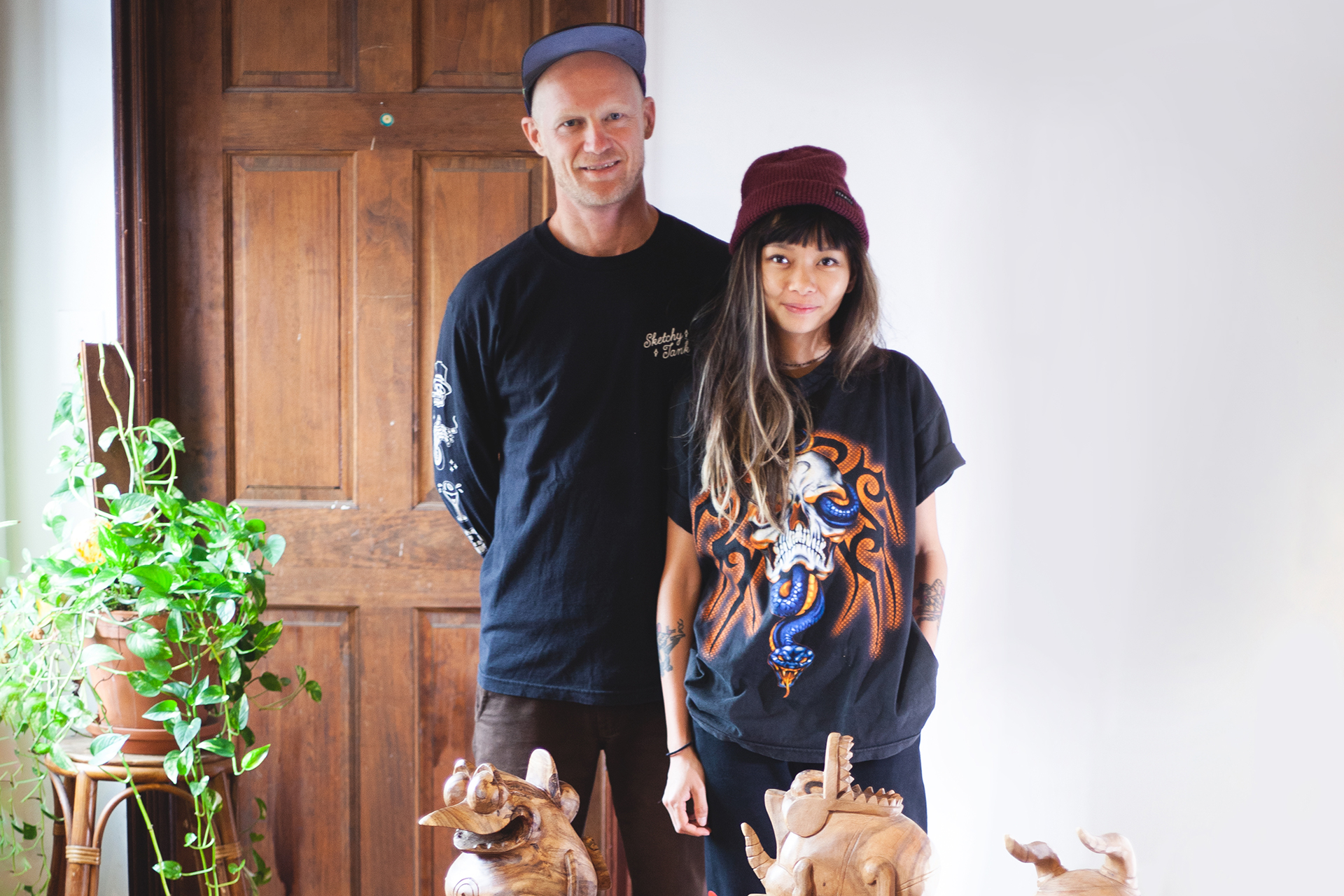
THE ARTWORK OF YOK AND SHERYO is teeming with odd anthropomorphic creatures, some mythical, others uncannily familiar. When I think about their multidisciplinary practice, I keep coming back to the idea of Animism—the concept that everything, irrespective of whether it is living or non-living, subject or object, has an innate essence, a life force of its own. In the duo’s murals, sculptures and installations, every little thing is given its own personality, from hotdogs and pizza, to animals and plants. Yok and Sheryo’s weird beings enliven inanimate things, recalling a kind of Studio Ghibli meets Rat Fink animated fantasy world.
Four sculptures drawn from Yok and Sheryo’s latest work feature in AGWA’s The View From Here exhibition. One, Badland bats (2020), is a wooden “artefact sculpture” of two bats, and like most of the artists’ characters, the bats are hybrids. The piece looks like a vaguely malevolent mascot, a gargoyle or some strange idol with the nose of a pig and dragon-like claws. This creature is from a fictional universe Yok and Sheryo have created, dubbed Yeahnahnesia.
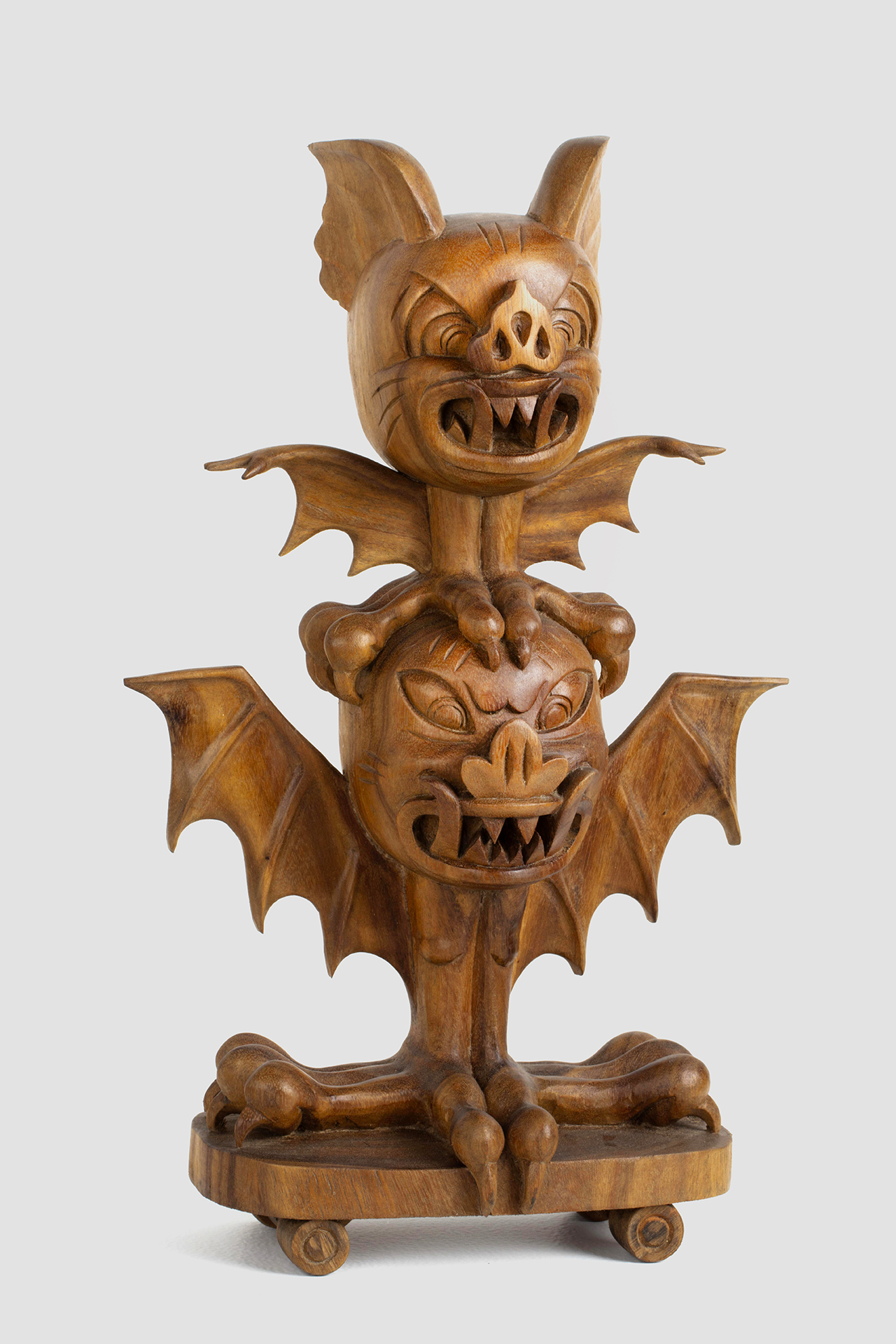
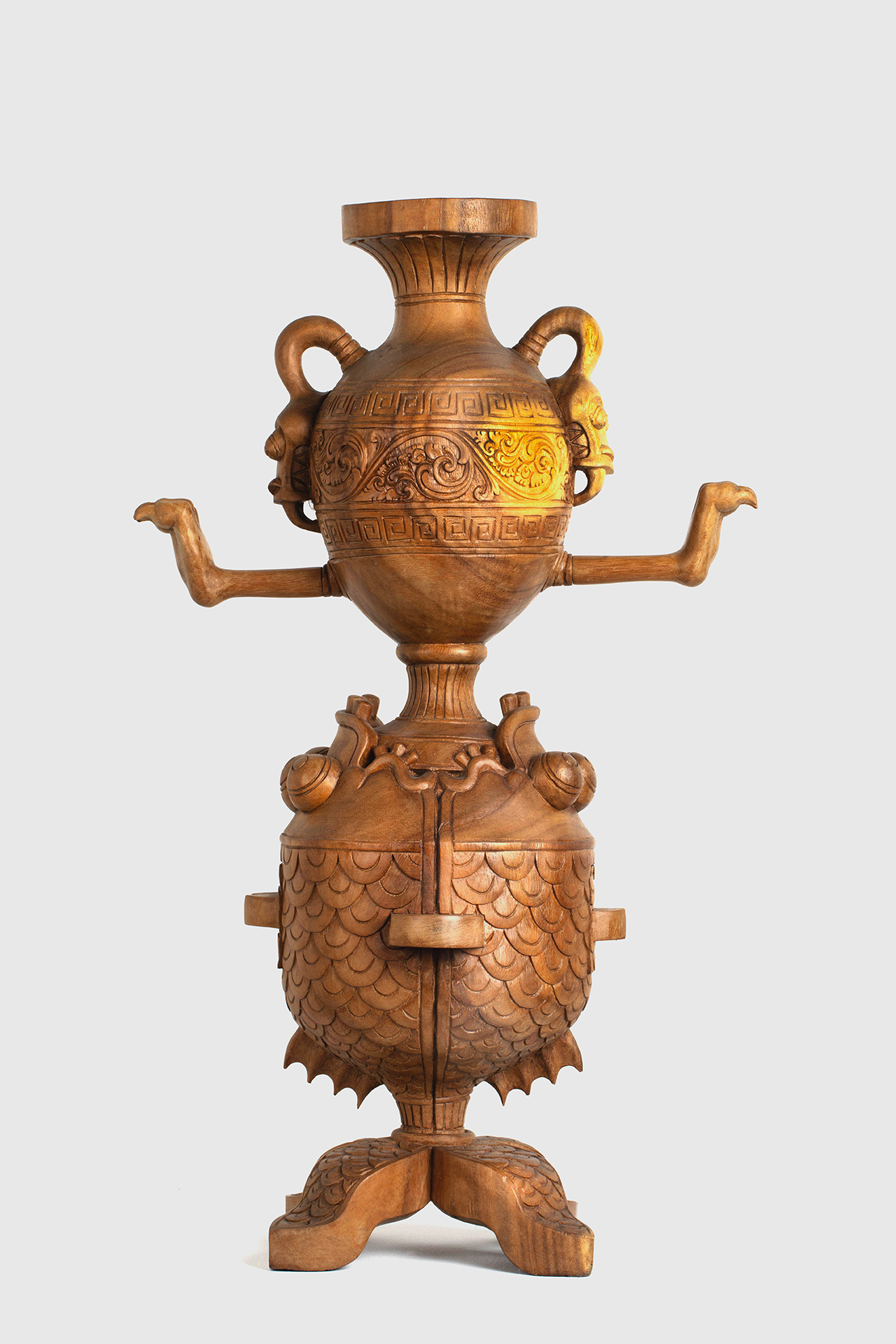
Yok and Sheryo describe Yeahnahnesia as “a fictional tropical land”. It’s both an imagined universe and a caricature of our own world, populated by bizarre and irreverent deities, creatures and shrines.
The duo’s practice shows an appetite for fun and the comic grotesque. They travel often, “soaking up influences” and accumulating ideas, motifs and techniques from around the world. Currently based between Bali and New York, the artists—both with graffiti roots—are itinerant, irreverent makers whose work often delves into tongue-in-cheek critiques of myopic belief systems.
While on the road, Yok and Sheryo engage with and respond to the local contexts in which they work. In Singapore they made Get the Money (2020), a prosperity shrine for the Chinese Cultural Centre; in New York they painted a neighbourhood ice cream truck for a collaboration with streetwear label Billionaire Boys Club; and in New Delhi they painted the massive mural titled Letters to Lodhi (2019), celebrating the launch of Delhi’s first open-air museum, Lodhi Art District. They’ve also made work and had exhibitions in Stockholm, Miami, Berlin, Cambodia and not least of all Albany, Western Australia, where they painted a giant sea dragon on the silos at the CBH Group’s grain terminal.
The collaborators are driven by a ceaseless curiosity ... [breathing] life into almost any seemingly inert thing; for instance, a character that is a New York pizza slice doubling as a kickflipping skateboarder.
Yok is originally from Perth and started painting in 1999. He was a key figure in the Perth graffiti and street art scene and helped propel the stylistic traits from graffiti into the context of graphic design and art institutions.
Sheryo is originally from Singapore, with an artistic background in illustration and design. She began painting murals in 2004 and was one of the first globally successful female street artists from Singapore. She then moved to Cambodia, which is where she and Yok first met. He was on a trip to Indonesia and missed his flight back to Australia. A mutual friend who was living in Cambodia introduced them and they painted their first mural together in 2011.
The collaborators are driven by a ceaseless curiosity. They often engage a syncretic blending of imagery to create their profane characters and talismans, which breathe life into almost any seemingly inert thing; for instance, a character that is a New York pizza slice doubling as a kickflipping skateboarder.
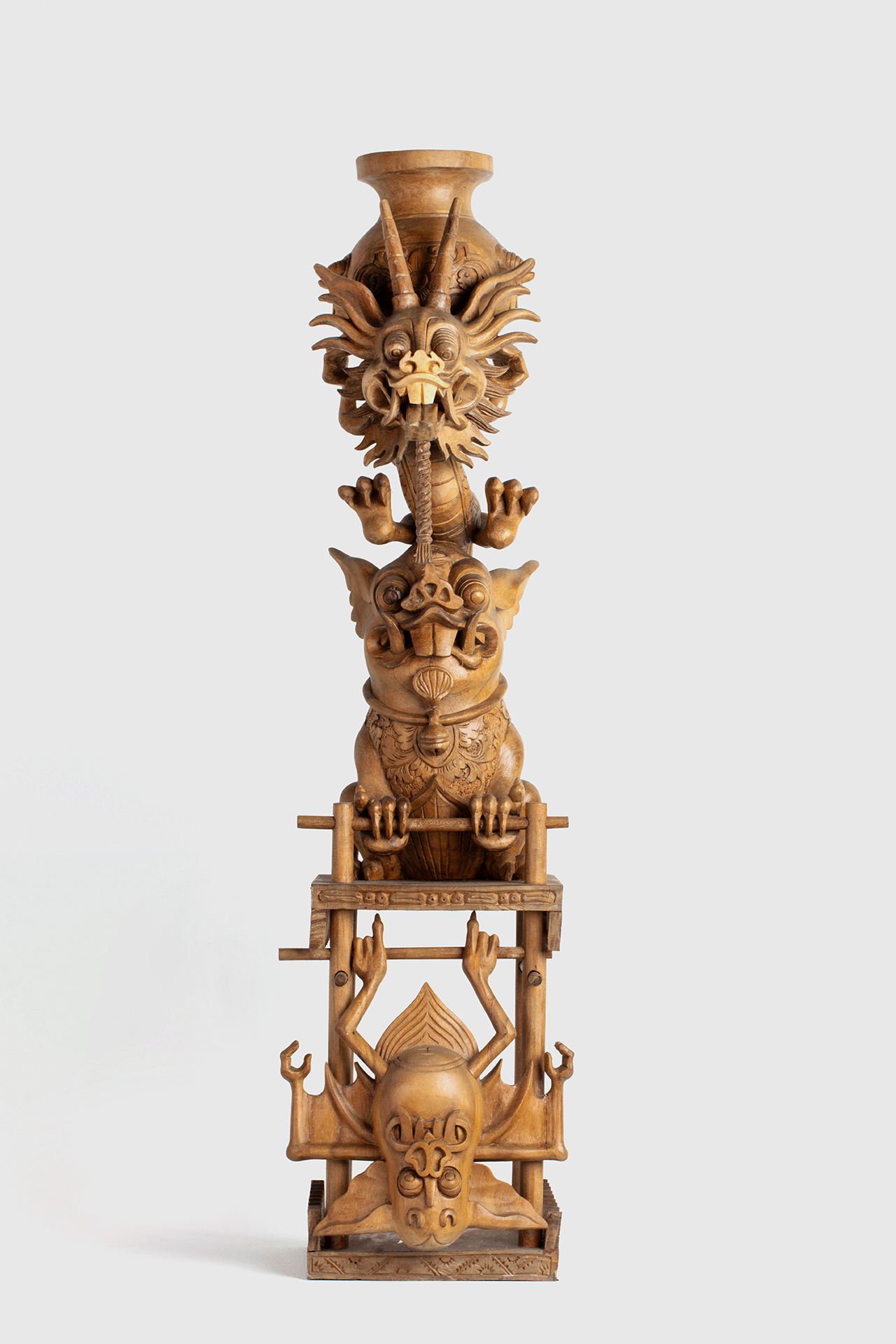
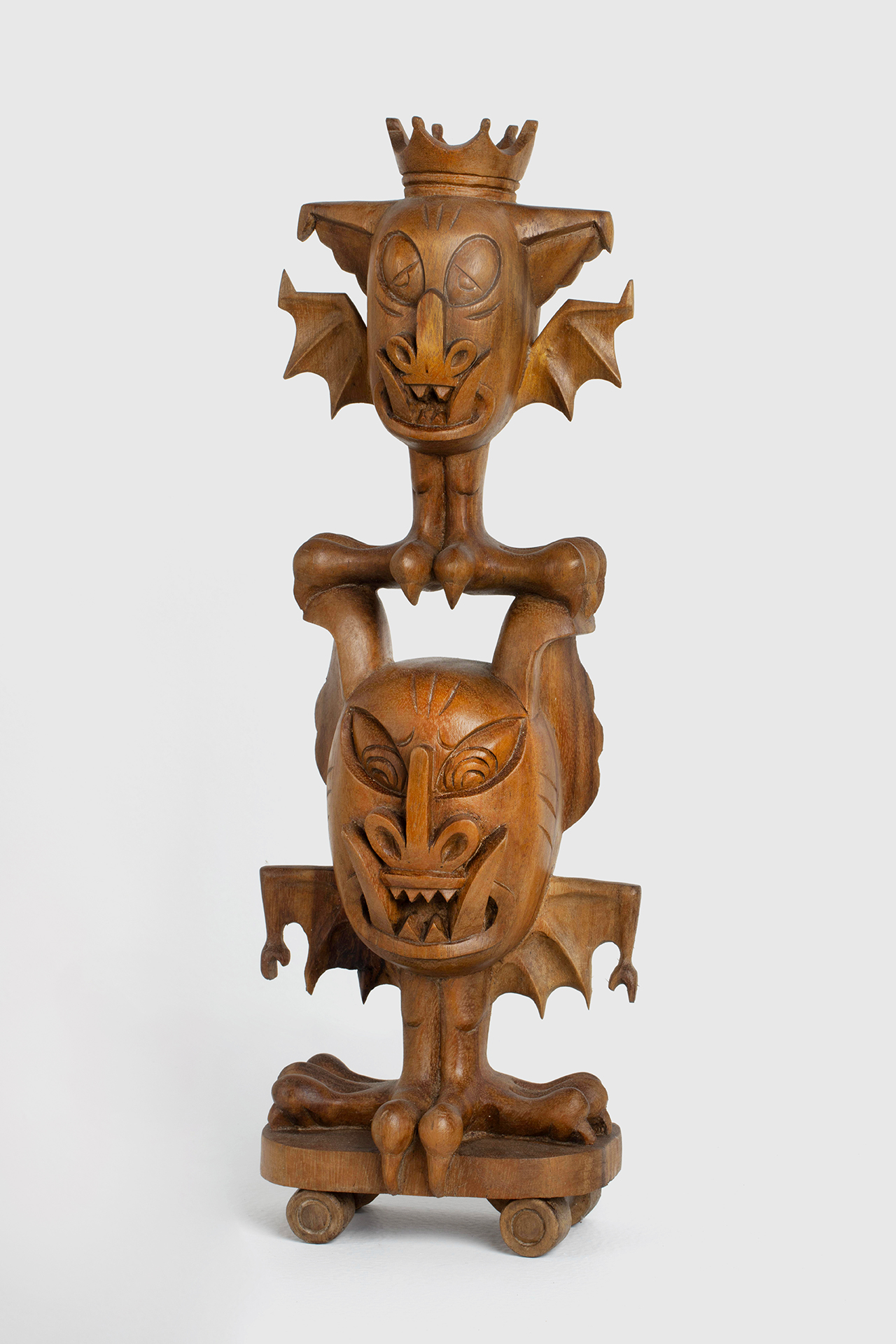
Yok and Sheryo’s fantastic creatures and mutants divulge secrets and reveal signs, pointing us back in the direction of our own world. In Temple of Self-Indulgence (2019), a Nyan Cat meme is cast as a deranged deity with a TV on its head, simultaneously a comment on the worship of false idols and ideas, be they religious, consumerist, or political. As with much of their work, the Nyan Cat divinity prompts consideration of how we might make sense of religion, belief, truth and the unknown in our own messy planetary habitat. Is it telling us it’s too late? Have humans doomed themselves and the planet?
When Yok shared a preview image of the wooden bat sculpture with me before its display at AGWA, it was accompanied by a cryptic document. It was a single sheet of “Yeahnahnesian Field Notes”—a textual artefact from the fictional world that the artists have made real.
The bat, this document says, “is endemic to the island [Yeahnahnesia]. They live in large numbers in the forgotten temples and caves” and the “wooden artifacts were recovered … from ornate temples swallowed up by immense jungle”. The artwork, which is both fictional bat and wooden artifact, brings to attention the innate essence of the object as character that belongs to an entire world of the artists’ imagining.
Here the world is enchanted, everything has a whimsical biography. With fun and a little chaos, Yok and Sheryo remind us to pay closer attention to other inhabitants of the ecosystems in which we live and on which we depend. They show us the leaps of imagination we might make to align, if only temporarily, with their energy.
This article was first published in the print publication The View From Here in October 2021 under the title Creatures of “Yeahnahnesia”.
